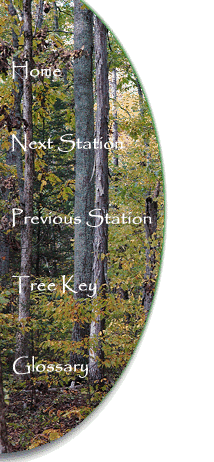| |
|
| |
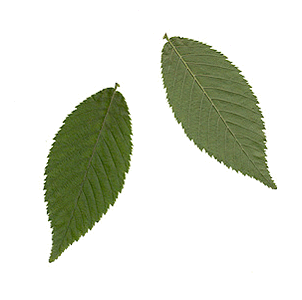 |
| |
Eastern Hophornbeam Leaf |
Identification:
The leaves are simple,
alternate and
doubly-serrate, darker on the upper surface
and lighter below. The veins branch one to several times as
they approach the margin. Each leaf is about 3 inches long.
Note the alternate branching pattern on the tree.
| |
|
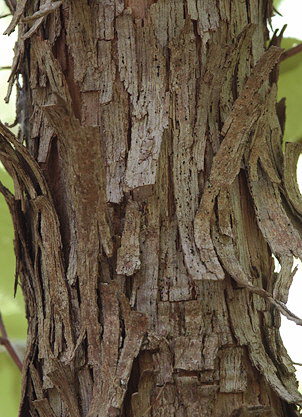 |
|
|
Eastern Hophornbeam Bark |
The bark of the Eastern Hophornbeam
is reddish brown or bronze
when young, becoming gray-brown, shredded and flaky as the tree
ages. On older trees the bark appears quite similar to the
Eastern Redcedar.
The twigs of the Eastern
Hophornbeam are dark reddish brown and slender.
| |
|
| |
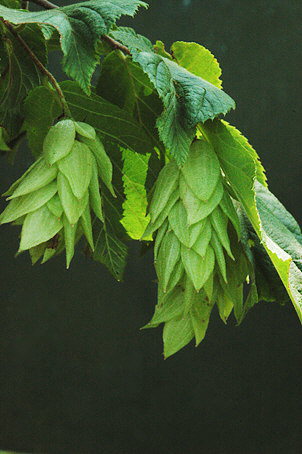 |
| |
Eastern Hophornbeam Fruit |
In late summer and fall look for
the clusters of nutlets hanging from the branches of trees beside
the trail. Each nutlet is ribbed and enclosed in a papery sac.
The hop-like appearance of the clusters of fruit, along with the
horn-like quality of the wood, gives this tree it's common name of
Hophornbeam. Look for the individual papery sacs on the
surface of the trail as you walk along.
Other Uses
and Lore:
The
genus name, Ostrya, is from the Greek meaning a tree with
hard wood. Another name for the tree is “Ironwood.” In fact, the
eastern hophornbeam’s wood is harder than oak, ash, hickory or
persimmon. Only dogwood is harder. In times past its wood was used
for the handles of mallets and axes. The fruits provide food for
northern bobwhite, white-tailed deer and eastern cottontail rabbits.
The Trail From
Station Four to Station Five
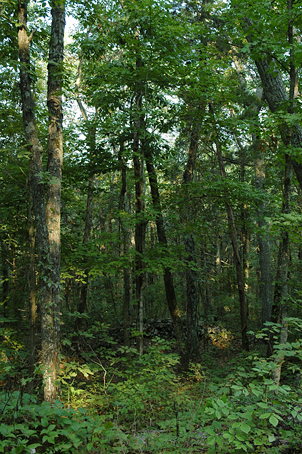 |
| Old Rock Wall |
As you walk
down the western side of the ridge, look for the old rock walls that
are evidence of previous owners of this land. Because of this
land use, not all of the forest at the Wilderness Station is of the
same age. Some areas are newly forested and the trees in these
areas are noticeably smaller. The varying age of the forest
supports different habitats and provides niches for a wide variety
of species. Look for Station Five on the right of the trail.
|
